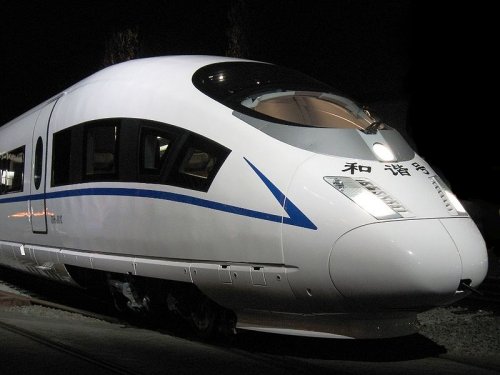Laos-China Rail Project Goes Full Steam Ahead
The Lao government will proceed with the construction of a US$7 billion Laos-China high-speed railway even though China has withdrawn from the joint venture.
At an extraordinary session yesterday, National Assembly members decided to approve the project, after concluding that it is essential for national development at a time when economic integration is viewed as the future of the region.
Laos and China had previously planned to jointly undertake the railway project, which would connect Vientiane with the Laos-China border in Luang Namtha province. However, the project was delayed when the Chinese construction company pulled out because they felt it would not be profitable enough.
Laos has now decided to assume sole ownership of the project, as it considers that transforming the country from being landlocked to a land link is central to the future of the nation’s development. The railway is now set to go ahead without any other direct stakeholders, but will be financed by a loan from China.
Deputy Prime Minister Somsavat Lengsavad reported on the project to the National Assembly yesterday, recounting developments to date. He stressed how important the railway is in terms of turning Laos into a land link within the region, attracting more foreign investment, and boosting economic growth. Mr Somsavat said the EXIM Bank of China will provide a loan to cover the cost of construction, which is considerable given the scale of the project.
The ground-breaking ceremony is expected to take place during the 9th Asia-Europe Meeting Summit on November 5-6 when top ranking leaders from both Laos and China will be present. Mr Somsavat said the railway will be about 420 km long, with a standard gauge track of 1.435 metres. The cost of construction is estimated to be about 44.25 billion yuan (about US$7 billion).
A 50-metre wide section of land will be cleared along the length of the railway on either side, and will be fenced off for security reasons. At tunnels, however, the width of the land cleared will extend to 100 metres, while at major train stations parcels of land measuring 3,000 by 250 metres will be allocated for development.
In the original project agreement, passenger trains running at speeds of up to 200 kph were planned but the Lao government has decided to reduce this to 160 kph for safety reasons, partly due to the hilly terrain. Goods trains meanwhile will travel at a maximum speed of 120 kph.
Mr Somsavat said passenger trains might be able to reach a speed of 200km per hour between Vientiane and Vangvieng where the land is relatively flat, but more studies are needed. The railway will be designed along similar lines to existing projects in China, which has considerable experience in building high speed rail links.
The railway will require 76 tunnels and 154 bridges to be built, including two bridges across the Mekong River. The tunnels and bridges alone represent more than 60 percent of the total route, such is the mountainous nature of northern Laos. The project will include 31 stations in all, but the government plans to open 20 stations initially and the rest later on.
There will be seven major stations along the route, of which two will be in Vientiane. From there, the railway will run north to China, stopping at Phonhong and Vangvieng districts in Vientiane province, before continuing on to Luang Prabang Oudomxay, Luang Namtha and the Chinese border.
published with the permission of Vientiane Times


With the withdrawal of China from the project I had thought (and hoped) this idea would quietly be forgotten. It’s my opinion that Laos is not ready for such a high-tech project, and that, for example, fixing and upgrading the national highways (which is clearly already a major challenge for the Lao Government) should be a first priority. I also think that the project will be a failure financially. Considering the investment, traveling on this route will be very expensive, and it will be very difficult (if not impossible) to get the volume needed to make this profitable (or at least generate enough to pay back the loan). Then, there are the safety issues. Surely local farmers would like to take their buffaloes from one side of the track to the other, and I doubt a fence is going to stop them. And finally, after the three hour travel from the Chinese border to Vientiane, you can continue your journey on a Thai train to reach Bangkok roughly 12 hours later. In my opinion, it would be much better to connect Thailand with China by rail following the North-South Economic Corridor, which passes Bokeo and Luangnamtha in Laos, especially since Thailand seems to consider upgrading rail services to Chiang Mai. An extension past Chiang Rai to reach the Lao border there seems not too hard to imagine.
I think at an investment of 7 Billion US $, there maybe other investments that are likely to provide better revenue for the people of Laos. This looks like a prestige project which IF successful would look good on the CV of some official, but could cripple the economy. Being beholden to China for another 7 Billion would get even closer to handing over sovereignty to the Chinese. Knowing the terrain I suspect final cost maybe way more.
How much of this sum will find its way into the pockets of those in government who are involved in the decision making process.
Who will control the strips of land near the tracks?
I feel sad for the common people in Laos, their sovereignty being sold off from underneath them